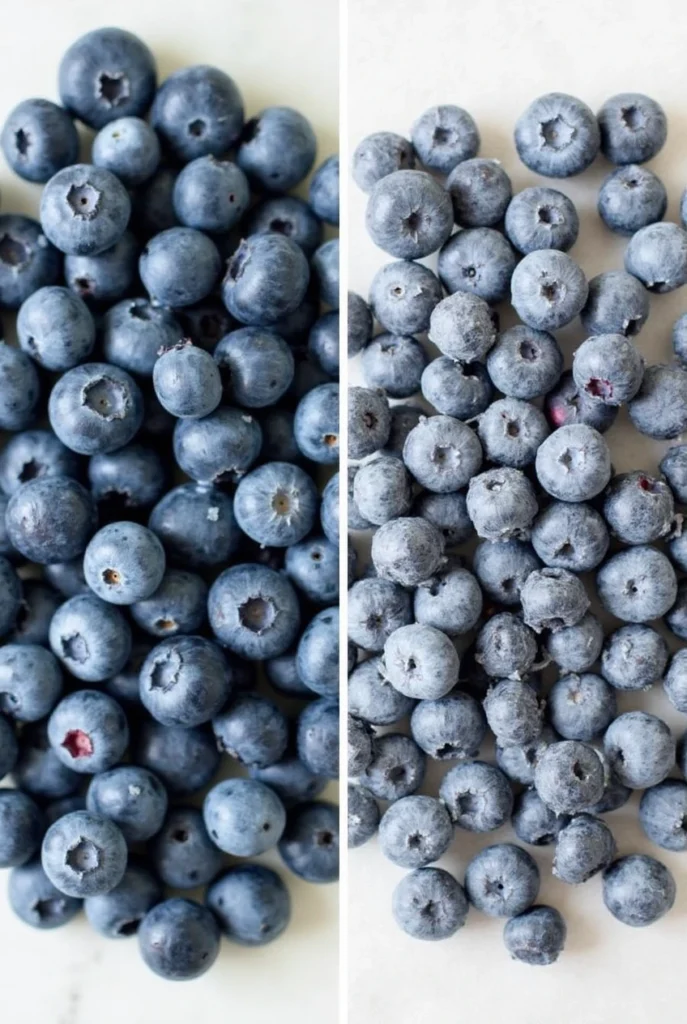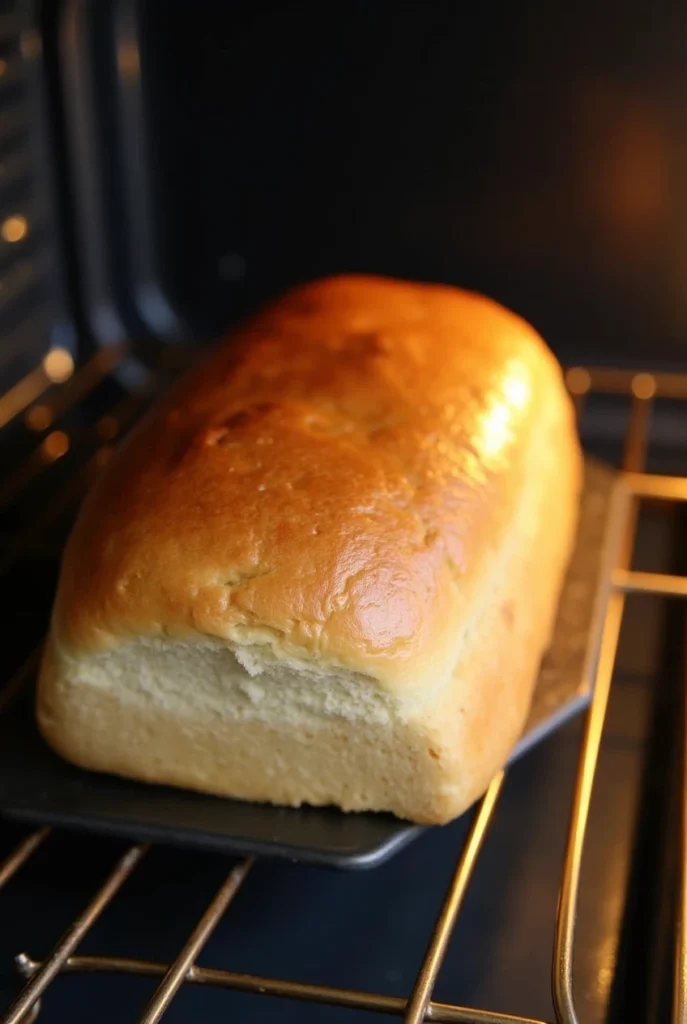7 Secrets to Moist Lemon Blueberry Bread: Tips for Perfecting Your Loaf
Table of Contents

Lemon blueberry bread is a classic that never goes out of style, offering the perfect balance of sweetness and tartness with a moist, tender crumb. The vibrant flavors of fresh blueberries and zesty lemon make every slice a treat. But if you’ve ever struggled with getting your loaf right, don’t worry — you’re not alone. The secret to baking a perfect Lemon and Blueberry Loaf lies in a few essential tips that ensure it remains moist, flavorful, and irresistible. Let’s dive into the 7 secrets that will help you create the perfect loaf every time.
1. Fresh Blueberries Are Key
The type of blueberries you use plays a significant role in the texture and flavor of your bread. Fresh blueberries are your best choice because they hold their shape while baking and release natural moisture into the batter, helping to keep your bread soft and tender.

Why Fresh is Best
Fresh blueberries contain more moisture, which helps prevent the bread from becoming dry. They also provide a bright, juicy burst of flavor in every bite. On the other hand, frozen blueberries can introduce excess moisture that can affect the loaf’s texture.
Pro Tip: If you have to use frozen blueberries, toss them lightly in flour before adding them to the batter. This helps them stay evenly distributed throughout the bread and prevents them from sinking to the bottom.
2. Incorporate Sour Cream or Greek Yogurt
One of the easiest ways to achieve a moist loaf is by using sour cream or Greek yogurt in the batter. These ingredients help create a tender crumb while adding extra moisture, producing soft and flavorful bread.
Why Add Sour Cream or Yogurt?
Sour cream and Greek yogurt are rich in fats and proteins, which contribute to the bread’s moistness and texture. The slight tanginess of these ingredients also beautifully complements the lemon flavor, giving your bread an added depth of taste.
Pro Tip: You can reduce the butter or oil in your recipe by substituting Greek yogurt or sour cream. This helps you achieve moist bread with less fat content.

3. Avoid Overmixing the Batter
Mixing your batter until it’s perfectly smooth might be tempting, but overmixing can lead to dense and dry bread. The key to a moist loaf is to mix the ingredients just enough to combine them, leaving the batter slightly lumpy.
Why Overmixing Is Harmful
When you overmix, the gluten in the flour becomes overactive, leading to a more authoritarian, denser loaf. Mixing until the ingredients are incorporated will ensure the bread stays light and fluffy.
Pro Tip: Use a spatula or wooden spoon to mix your batter. If you’re using an electric mixer, mix on low speed and stop as soon as the flour is combined.

4. Use Room Temperature Ingredients
Using ingredients that are at room temperature helps them blend more smoothly and evenly, contributing to a better overall texture in your bread. Cold ingredients can cause your batter to seize up, resulting in unevenly mixed dough and a denser loaf.
Why Room Temperature Matters
Room-temperature butter, eggs, and dairy products mix better into the batter, ensuring the bread rises evenly. Cold ingredients may cause your bread to collapse or result in an inconsistent crumb.
Pro Tip: Allow your eggs, butter, and yogurt to sit out for about 30 minutes before starting your baking. If you’re short on time, warm the eggs by placing them in a bowl of warm water for 10 minutes.

5. Perfect Your Baking Temperature
Getting the baking temperature right is crucial for achieving the perfect loaf. If the oven is too hot, the outside of the bread will brown too quickly, leaving the inside undercooked. If it’s too cool, the bread may not rise properly and could turn out dry.
Optimal Temperature: 350°F (175°C)

This temperature ensures that the bread bakes evenly, resulting in a golden crust and a tender, moist interior. If using a dark-colored pan, reduce the temperature by 25°F to prevent the crust from overbaking.
Pro Tip: Always preheat your oven before baking, and place the bread in the center rack for even heat distribution.
6. Add a Zesty Lemon Glaze
Drizzle a simple lemon glaze over your cooled bread for extra moisture and flavor. The glaze adds a burst of citrusy sweetness and helps to lock in moisture, making your loaf even more irresistible.
How to Make the Lemon Glaze
Combine powdered sugar and fresh lemon juice until smooth, adjusting the thickness by adding more sugar or lemon juice as needed. Drizzle the glaze over the bread once it has cooled slightly to prevent it from melting into the bread completely.
Pro Tip: The glaze will enhance the flavor and add a glossy finish, making the bread more visually appealing.

7. Be Patient and Cool Your Bread
After baking, it can be tempting to slice into your loaf right away, but letting it cool before cutting is essential for maintaining moisture. Slicing the bread while it’s still hot can result in a messy loaf that falls apart.
Why Cooling Matters
Let the bread cool for a minimum of 30 minutes before cutting into it. This gives the loaf time to set and ensures the texture remains intact. Cooling also helps prevent the bread from becoming soggy.
Pro Tip: Let the bread cool on a wire rack to allow air to circulate, which helps it cool evenly and prevents the bottom from becoming too damp.
Recipe Table: Ingredients for Lemon Blueberry Bread
| Ingredient | Amount |
|---|---|
| All-purpose flour | 2 cups |
| Baking powder | 1 ½ teaspoons |
| Baking soda | ½ teaspoon |
| Salt | ¼ teaspoon |
| Greek yogurt or sour cream | ½ cup |
| Butter (softened) | ½ cup |
| Eggs | 2 large |
| Granulated sugar | 1 cup |
| Lemon zest | 1 tbsp |
| Fresh blueberries | 1 cup |
| Lemon juice (for glaze) | 2 tbsp |
| Powdered sugar (for glaze) | ½ cup |
Conclusion: Achieving Moist Lemon Blueberry Bread
Creating a perfect Lemon and Blueberry Loaf is an art that requires a few key techniques. Every step is crucial to achieving that ideal loaf, from selecting fresh blueberries to using the right fats and ensuring you don’t overmix the batter. Following these seven secrets, you’ll bake a moist, flavorful bread that will always wow your friends and family. So go ahead and give these tips a try — your perfect Blueberry Lemon Bread awaits!

Frequently Asked Questions (FAQs)
Q: Is it possible to use frozen blueberries instead of fresh ones?
A: Fresh blueberries are always best for texture and flavor. However, if you must use frozen blueberries, toss them lightly in flour before adding them to the batter. This helps keep excess moisture from impacting the texture of the bread.
Q: Can I use a different glaze?
A: Absolutely! You can experiment with different types of glazes, such as a cream cheese glaze or a honey lemon glaze, to add variety and enhance the flavor of your bread.
Q: How long does lemon blueberry bread last?
A: At room temperature Lemon and Blueberry Loaf stays fresh for 2–3 days. Store it in an airtight container or freeze it for up to 3 months to extend its shelf life.
Did You Try Our Recipe?
There are no reviews yet. Be the first one to write one.

